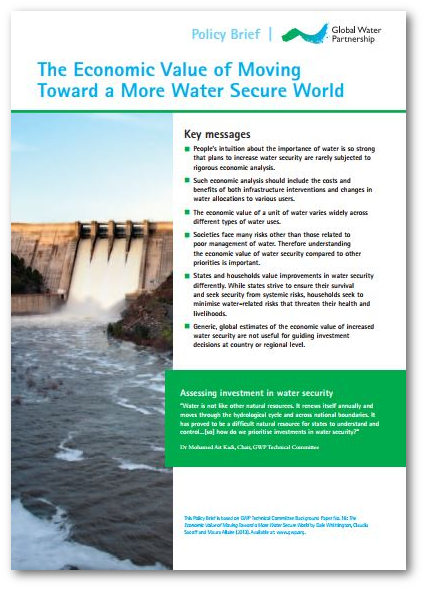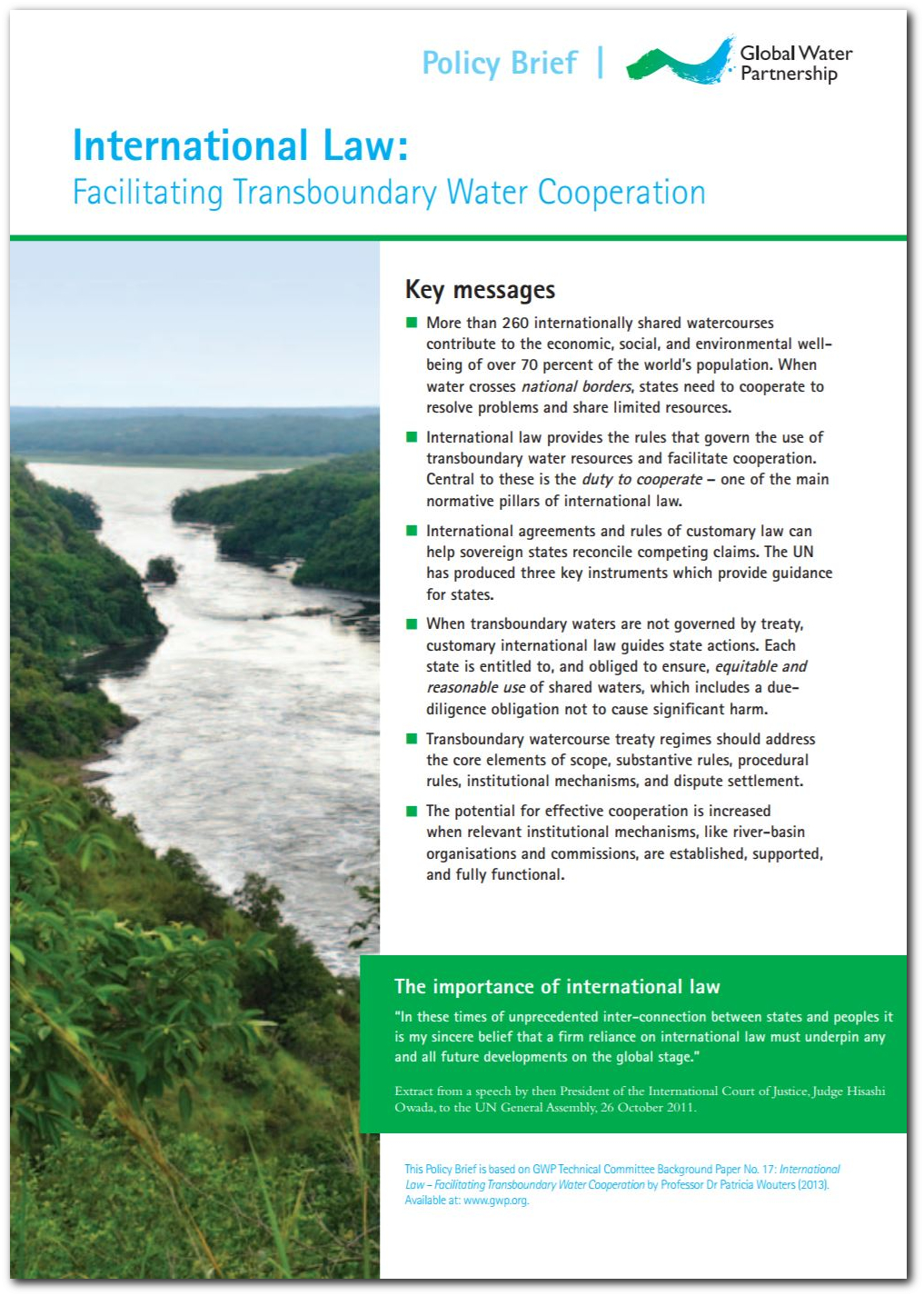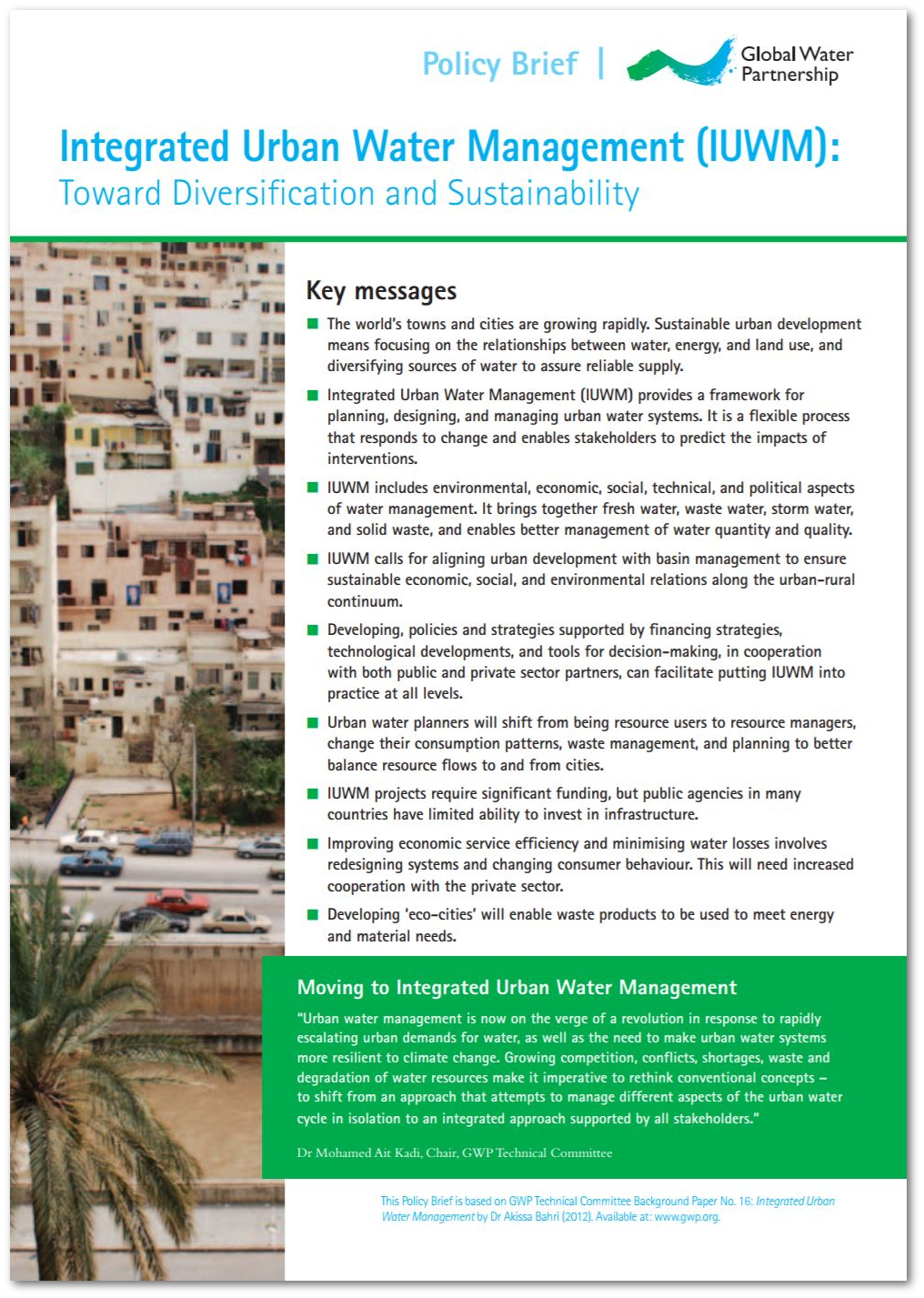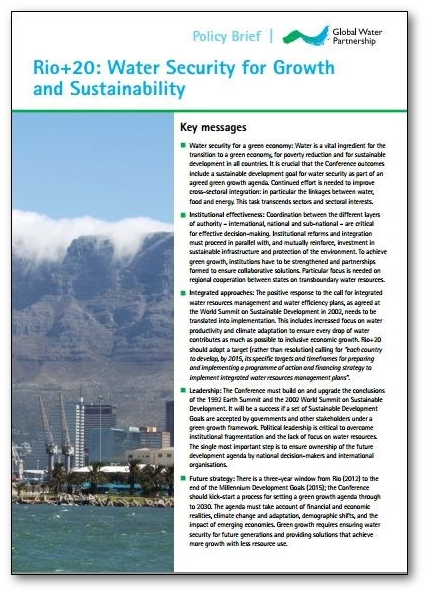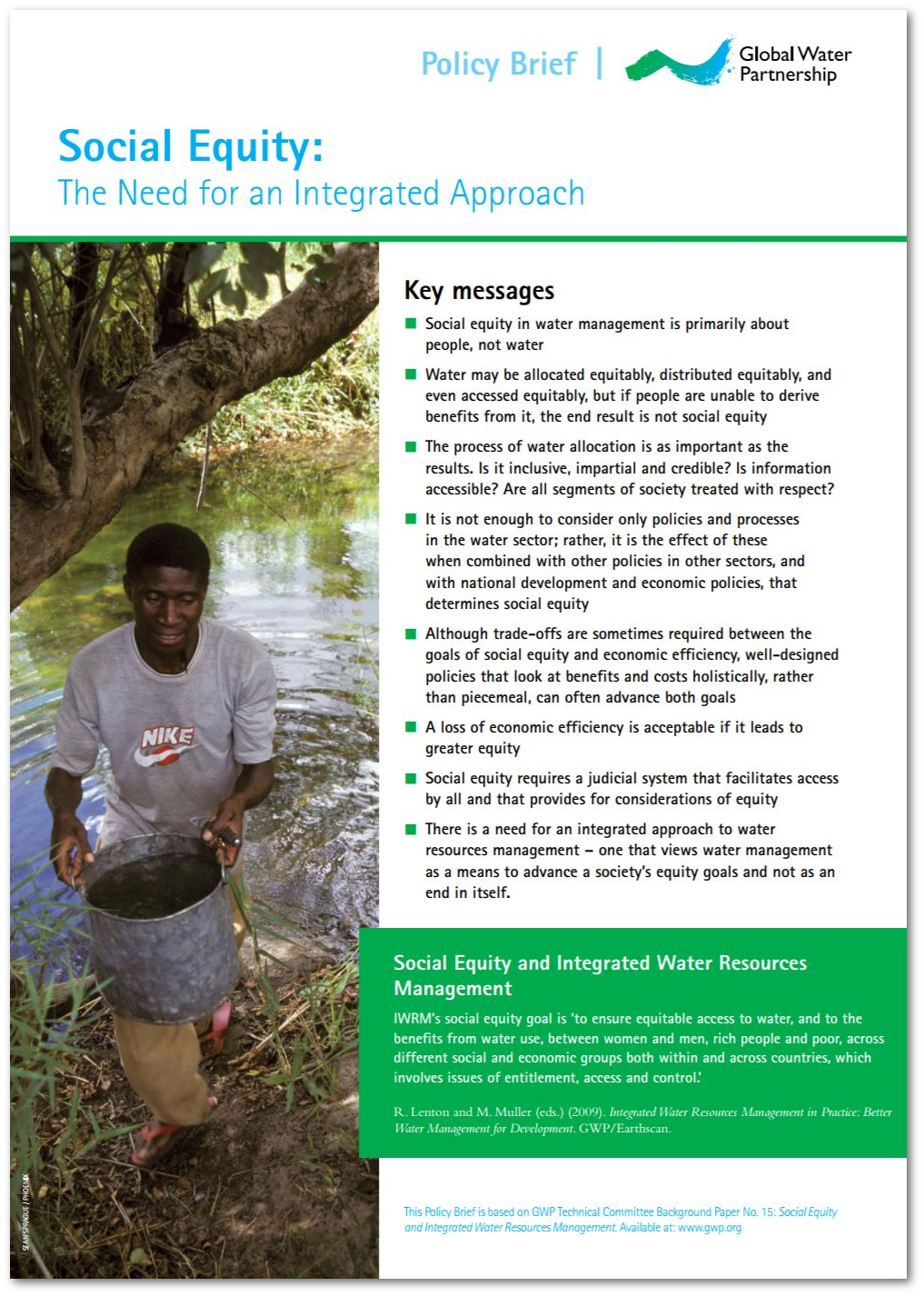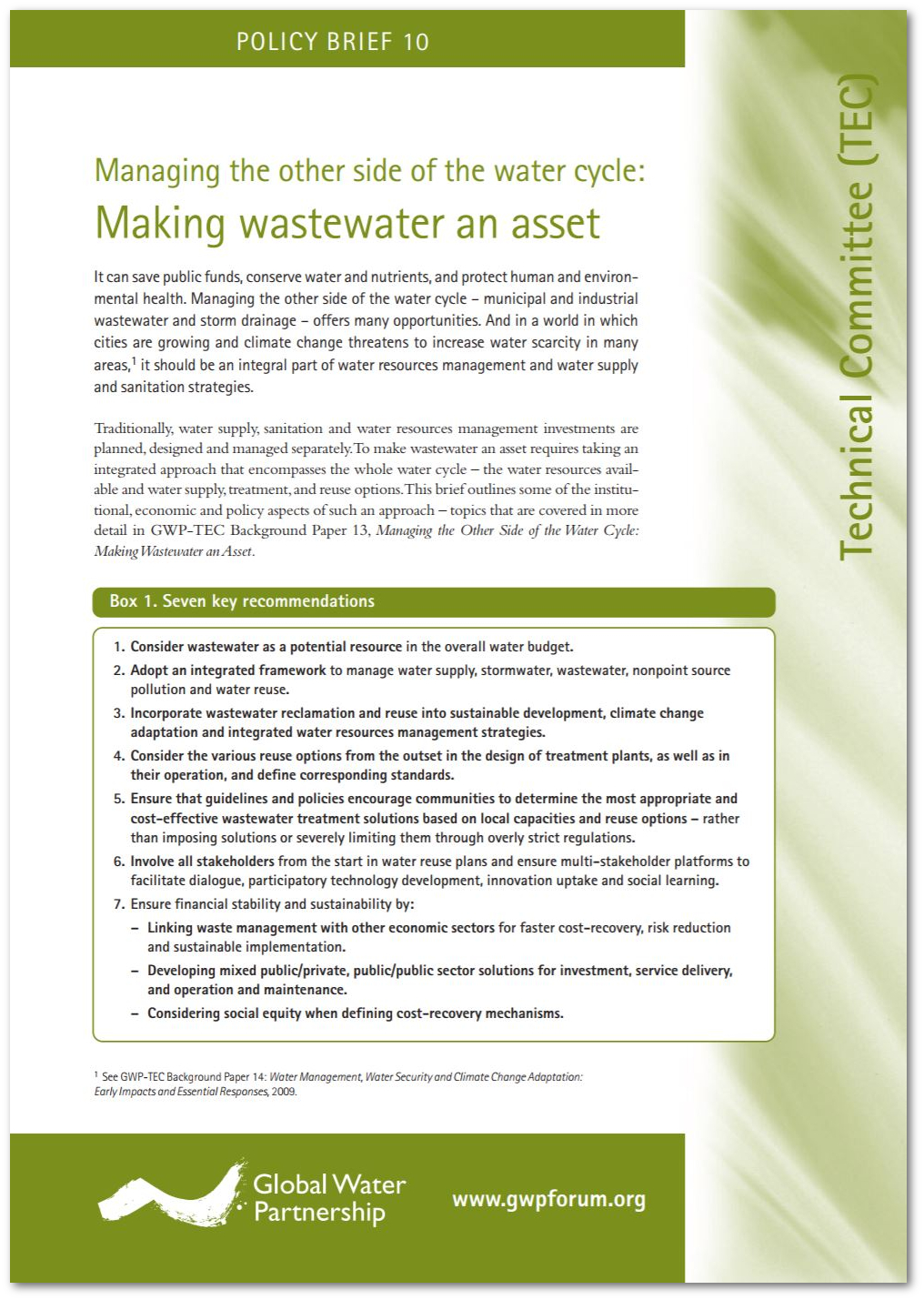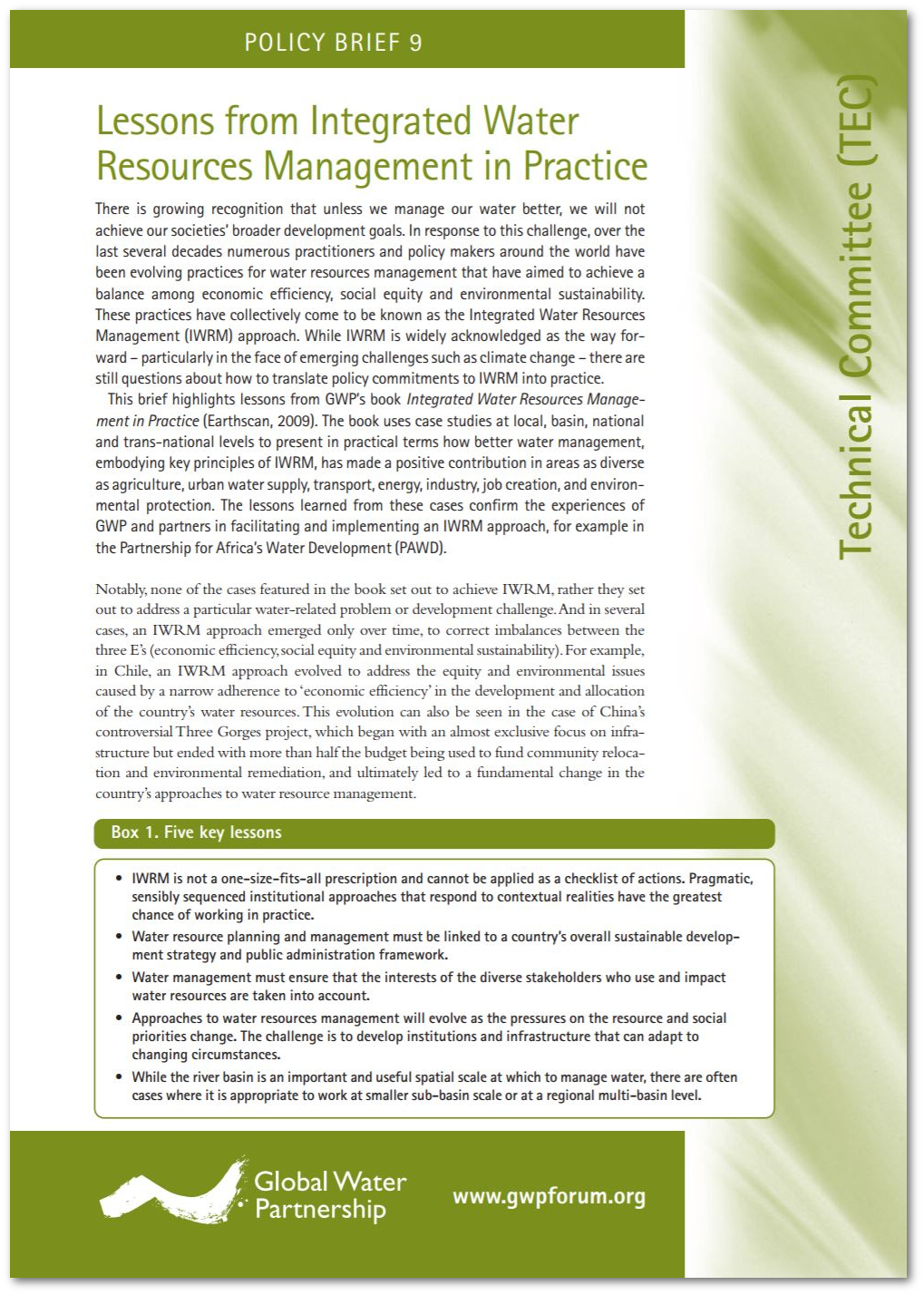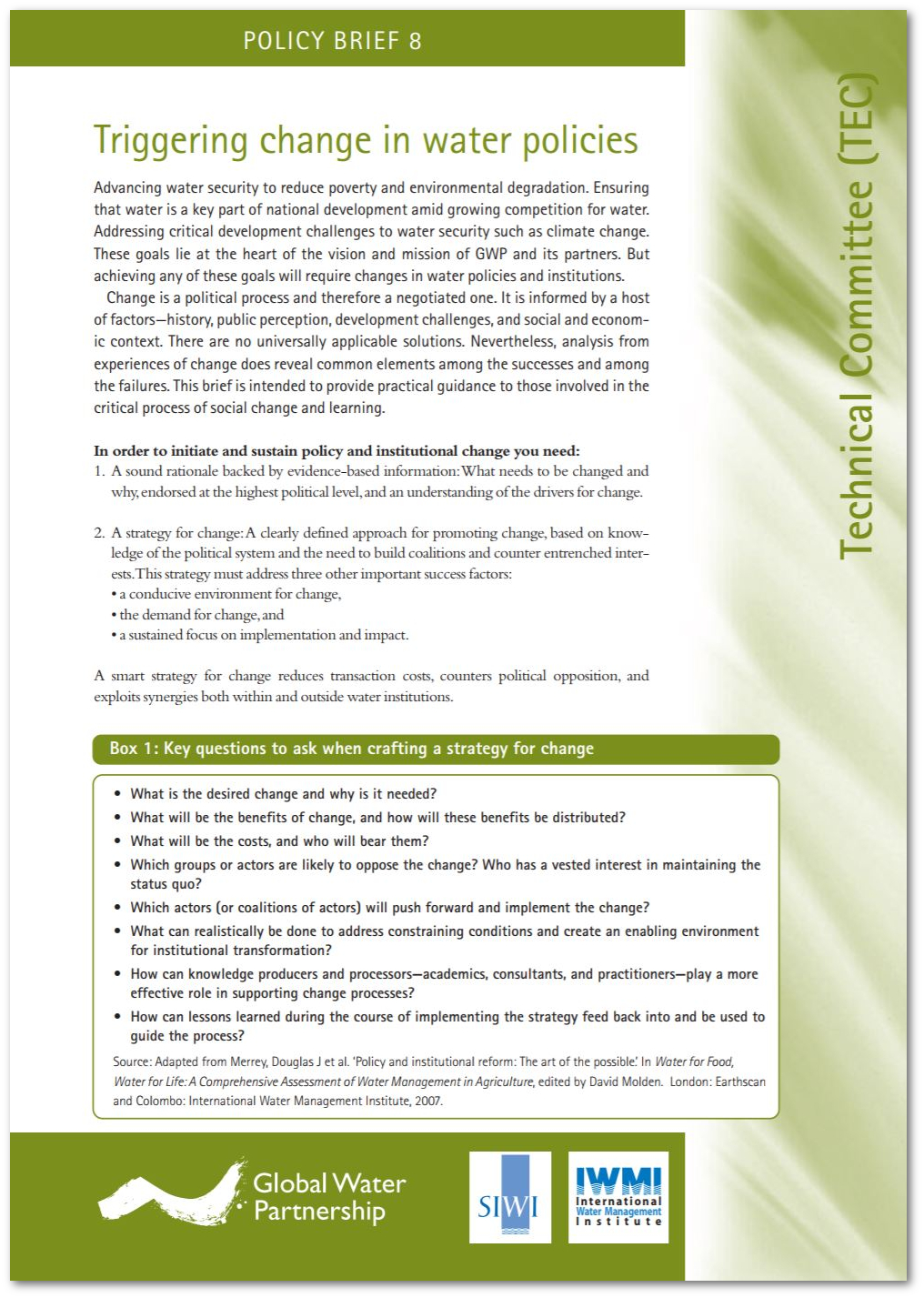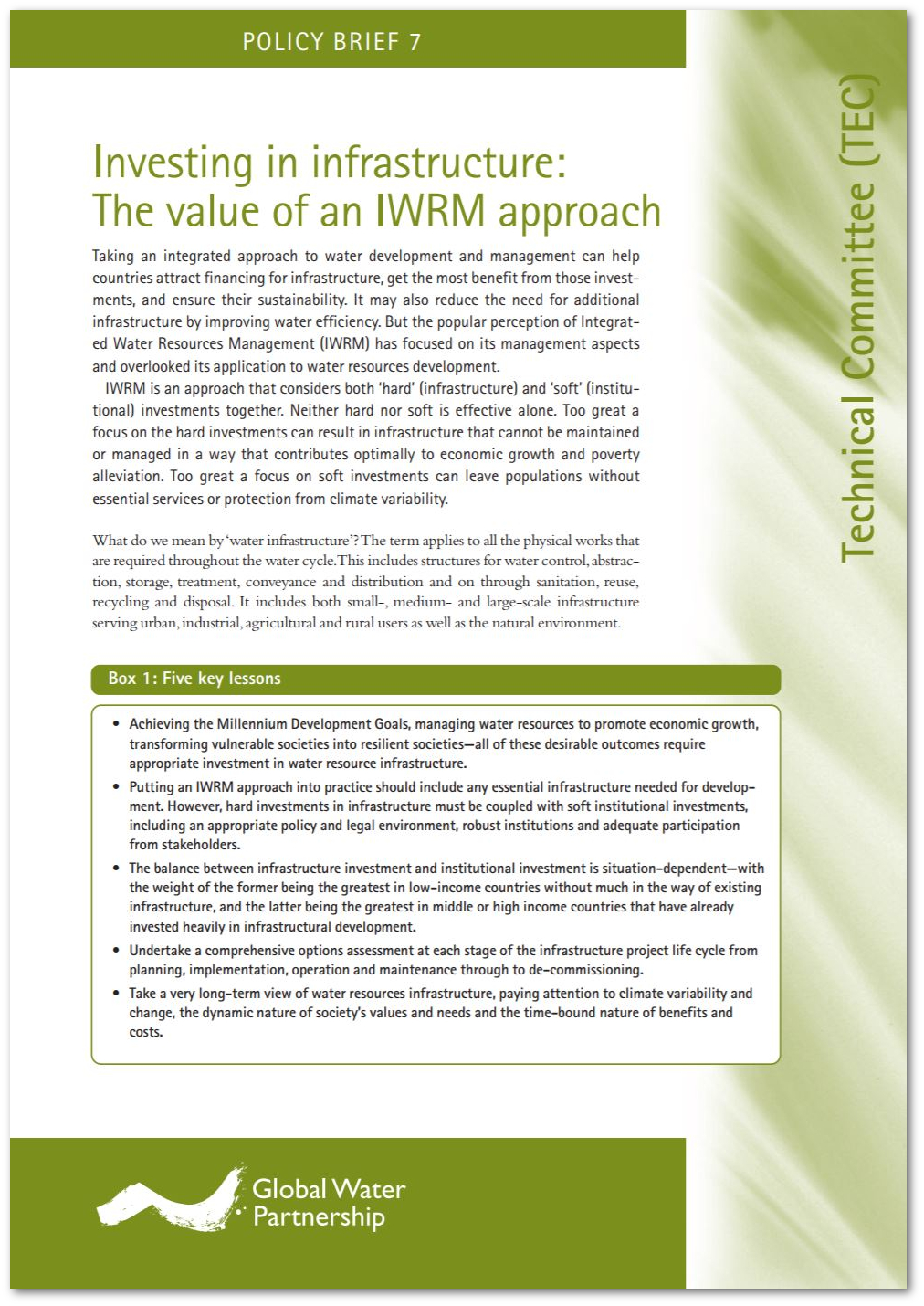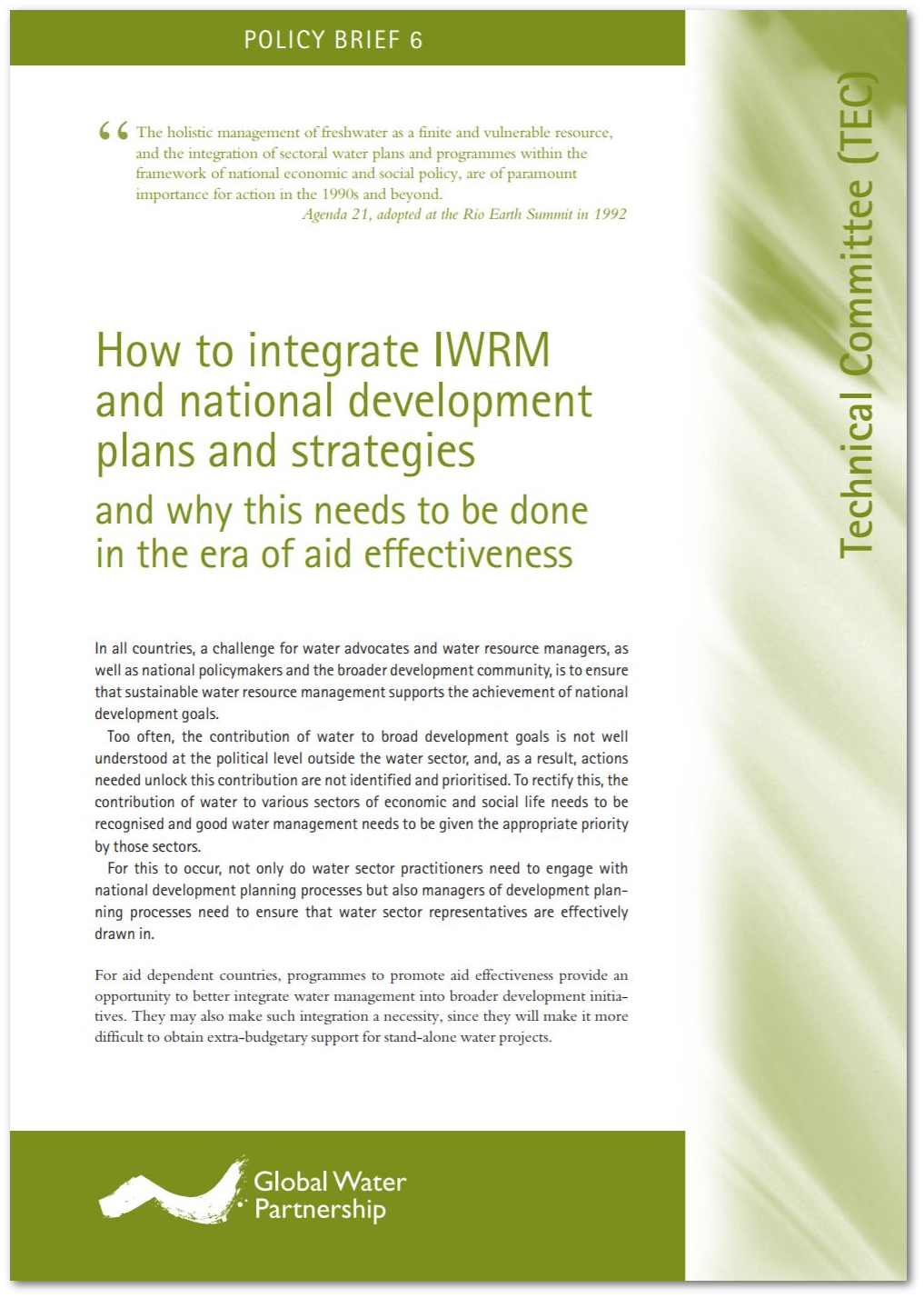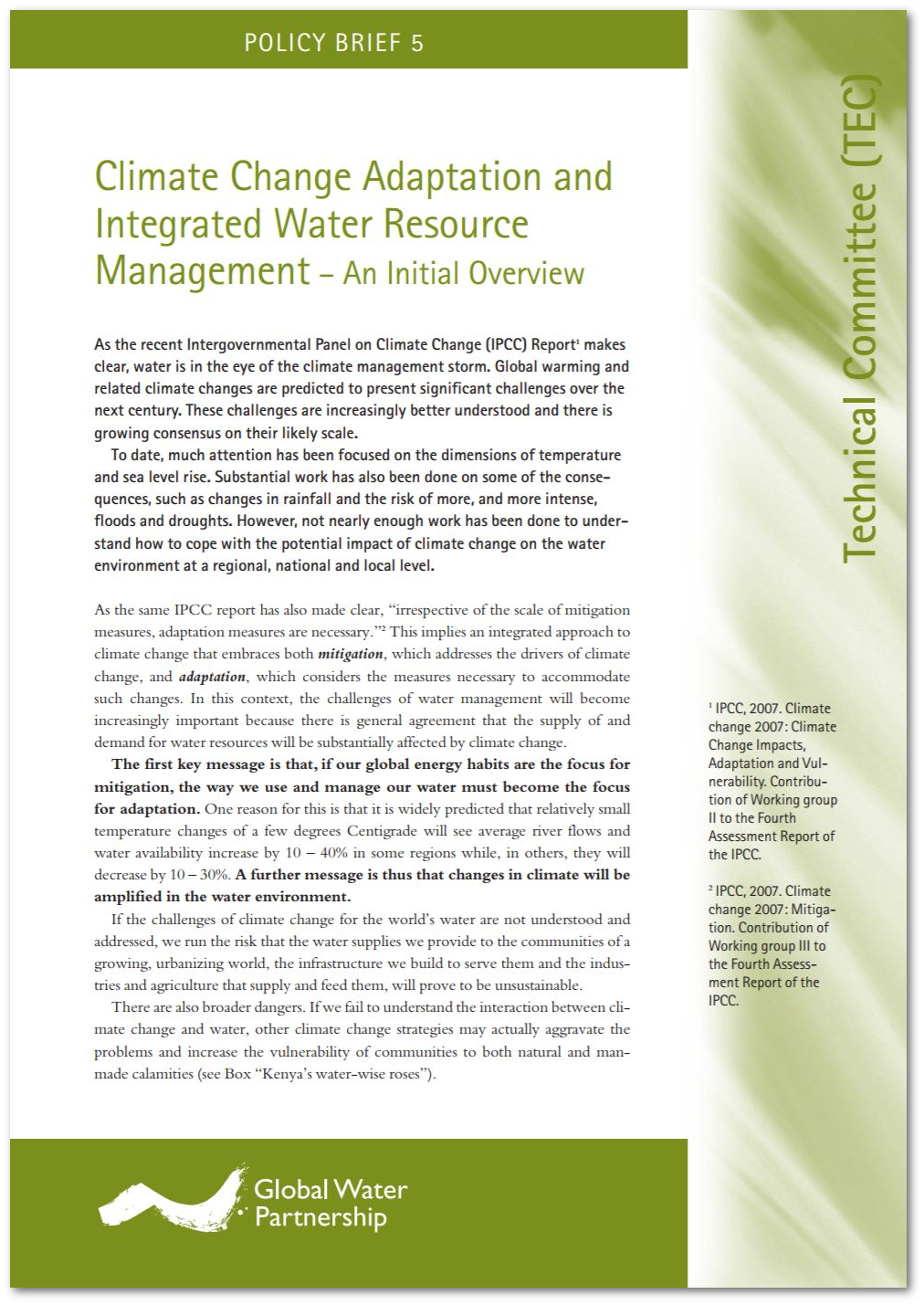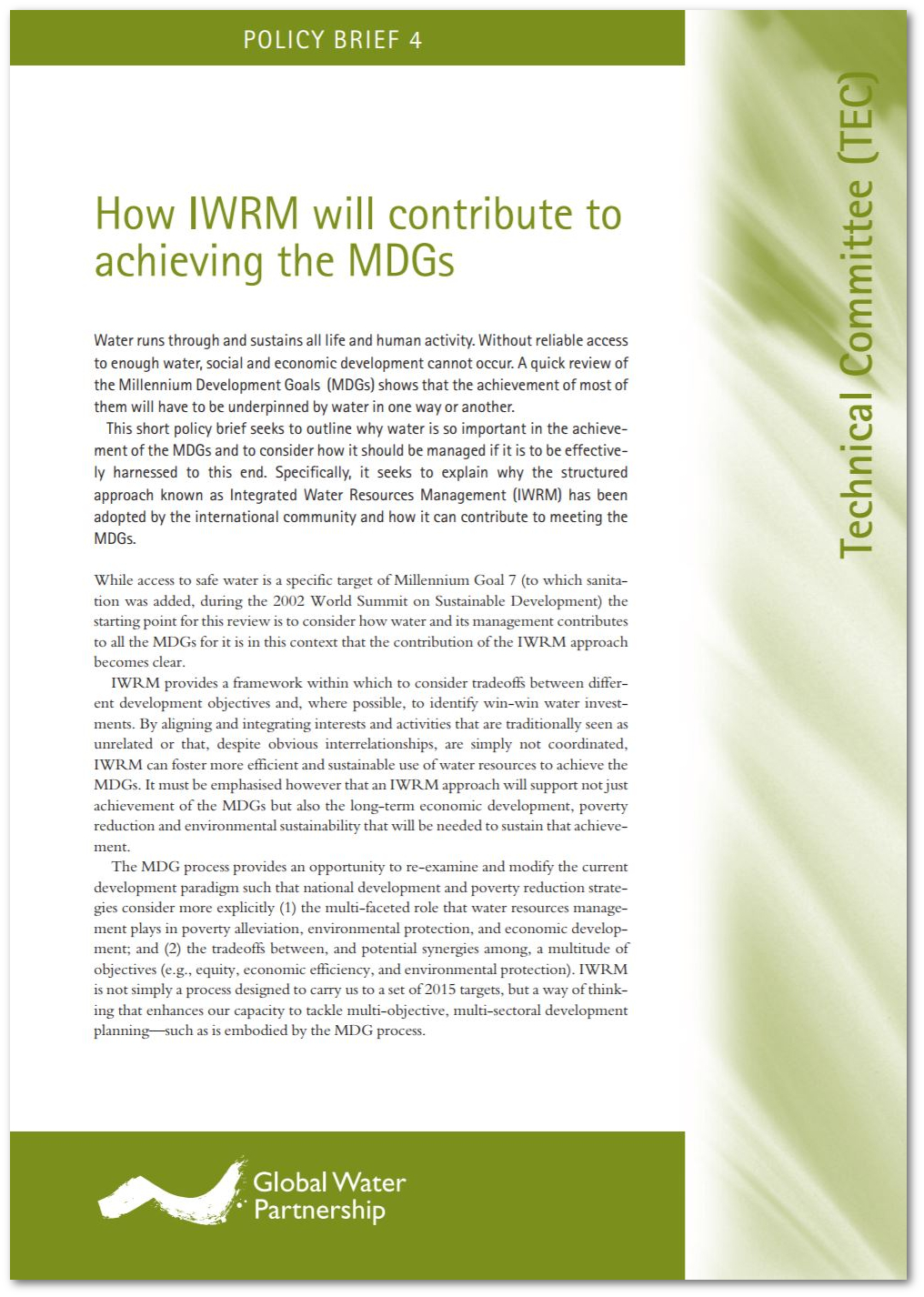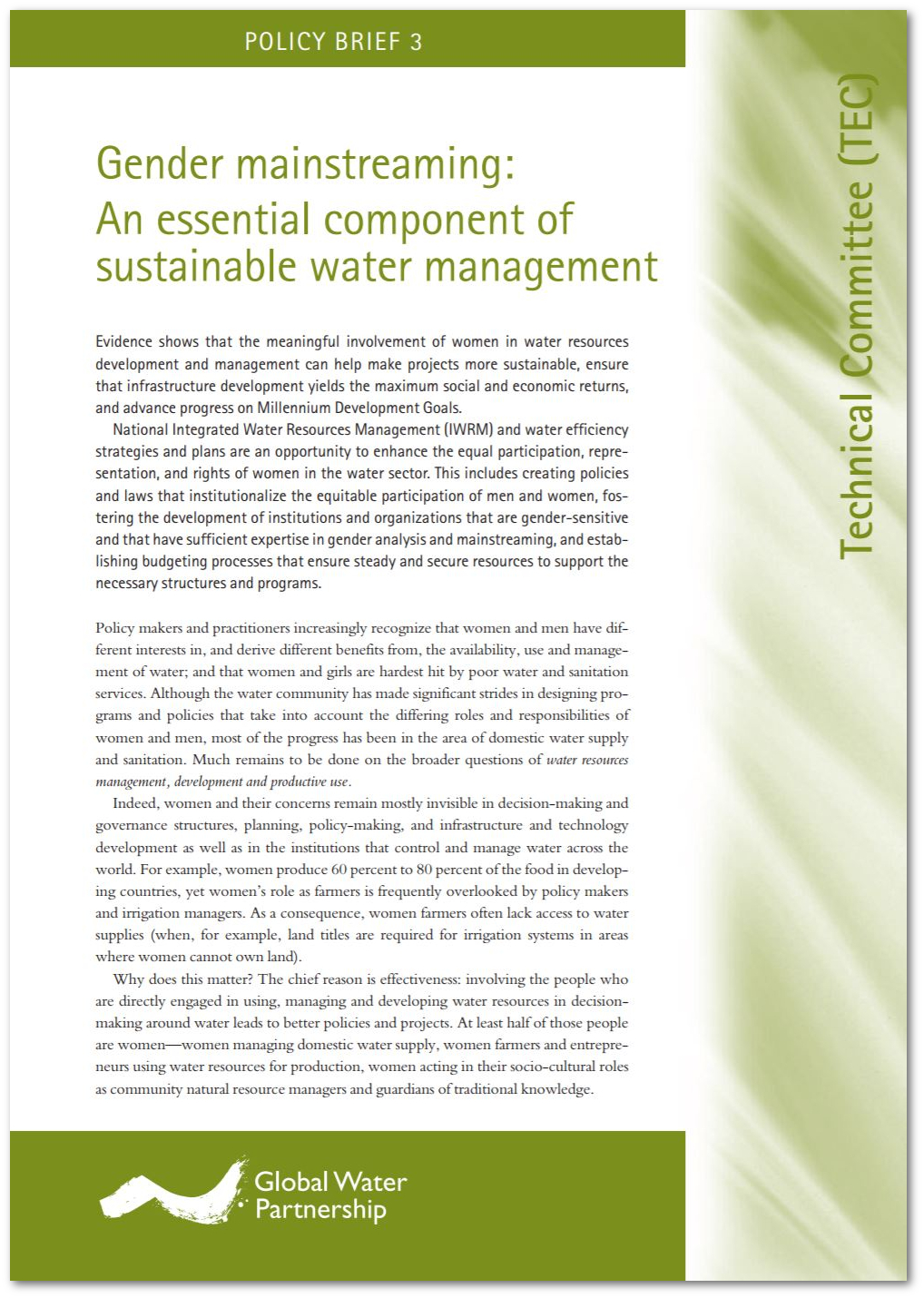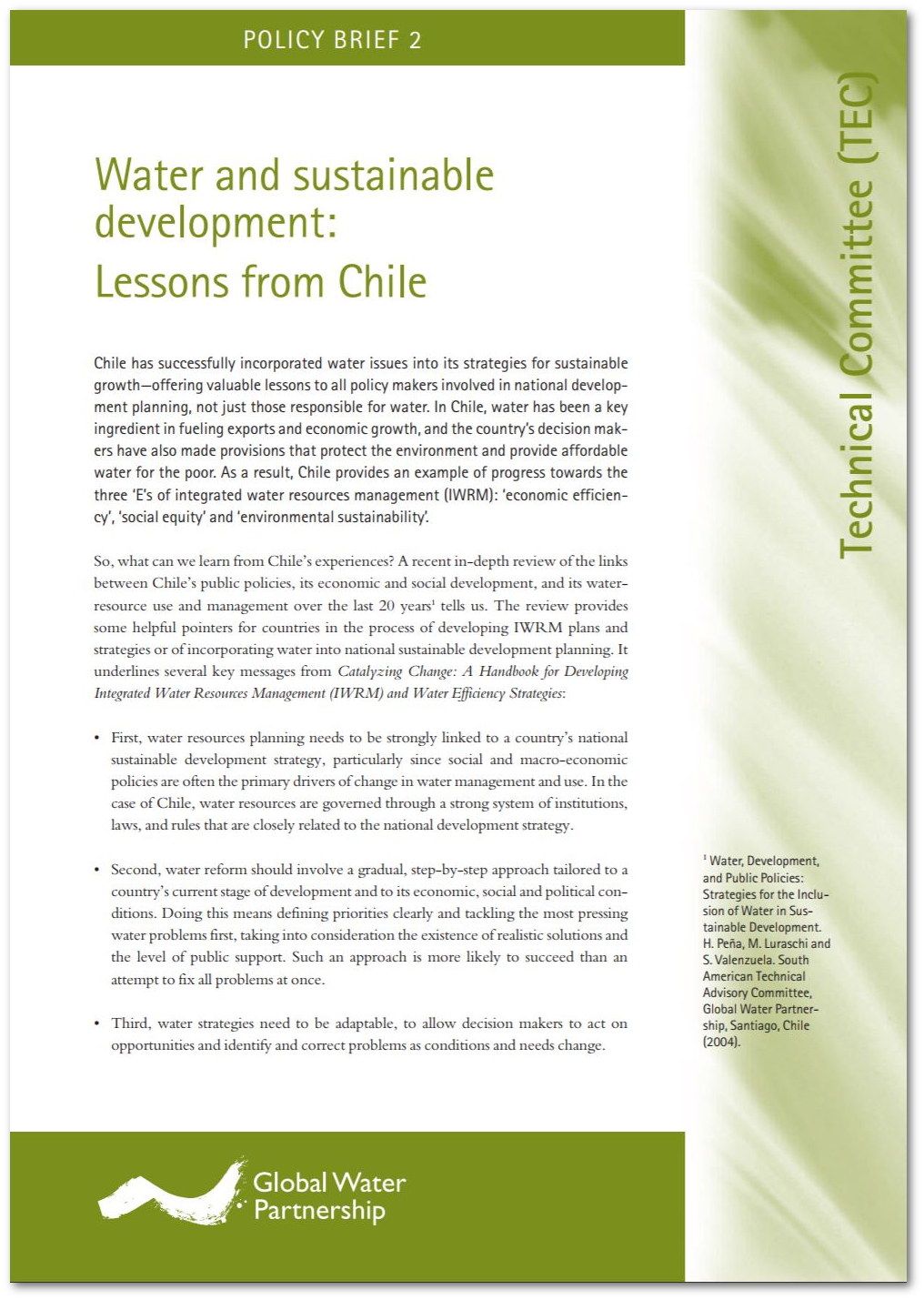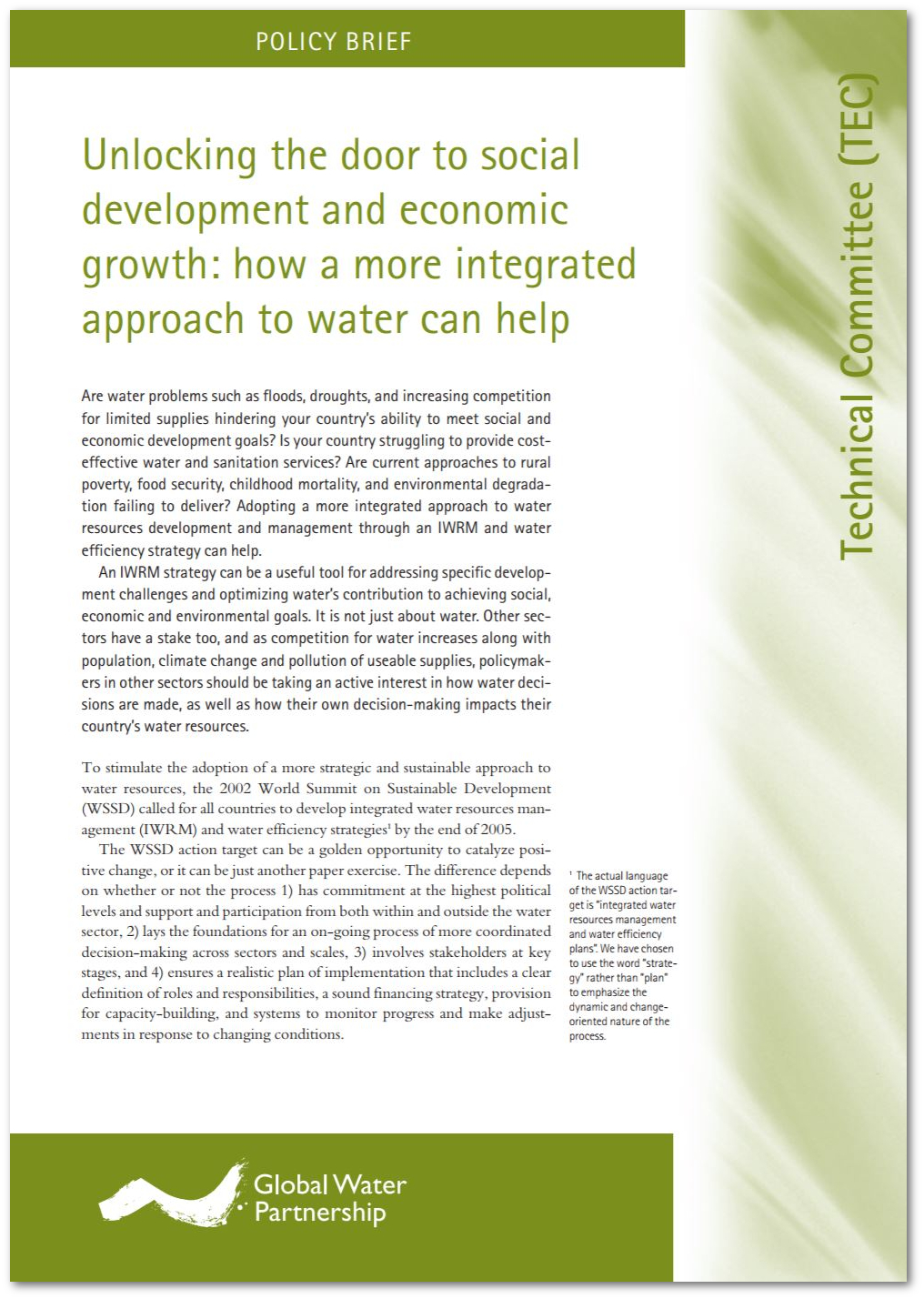The Economic Value of Moving Toward a More Water Secure World (2013)
This policy brief explains why it is important to understand the economic value of water security compared to other priorities. It also illustrates how the value of water is determined and describes the different perspectives of the states and the households.
Read: English
International Law: Facilitating Transboundary Water Cooperation (2013)
This policy brief explains the importance of cooperation between states in order to resolve water problems and share limited resources. It describes where the critical challenges lie and what international laws and instruments are available to solve conflicts between states that have competing claims.
Read: English
Integrated Urban Water Management (IUWM): Toward Diversification and Sustainability (2013)
This policy brief outlines how IUWM can provide a framework for planning, designing, and managing urban water systems. The brief also encourages policy makers to consider the water cycle as a whole when cities are being developed.
Read: English
Rio+20: Water Security for Growth and Sustainability (2012)
This policy brief summarizes the key messages towards the Rio+20 Conference. These messages derive from GWP work and experiences and include: the crucial role of water as a key driver in the green economy, the need for building more effective institutions to manage water better, the ongoing need for integrated approaches, ensuring water security for the economy, for society and for the environment, and the political leadership and vision essential for overcoming fragmentation.
Read: English French Spanish Portuguese
Social Equity: The Need for an Integrated Approach (2012)
Social equity, economic efficiency, and environmental sustainability constitute the three pillars of Integrated Water Resources Management. As one of the goals of public water policies, equity features frequently in arguments that promote, or object to, reforms in the water sector. This policy brief provides an analytical framework to understand the relationship between water management and social equity – including causes, dynamics, consequences, and possible solutions.
Read: English
Managing the Other Side of the Water Cycle: Making Wastewater an Asset (2009)
This policy brief makes the case for an integrated approach to managing the other side of the water cycle – municipal and industrial wastewater and storm drainage. It outlines some of the key economic, policy and institutional aspects of such an approach and provides guidance on policies and institutions needed to support water reuse. It gives a short outline of what can be the policies and institutions to support water reuse.
Read: English
Lessons from IWRM in Practice (2009)
This brief summarizes lessons from the book IWRM in Practice (Earthscan, 2009). It seeks to help development policy makers and practitioners in different sectors to understand the principles and practice of the IWRM approach. Examples from the book use case studies at local, basin, national and trans-national levels to present in practical terms how better water management, embodying key principles of IWRM, has made a positive contribution in a variety of areas.
Read: English
Triggering Change in Water Policies (2009)
This policy brief discusses key questions to ask when crafting a strategy for change. It suggests the following basic stages: laying the groundwork for change; creating or taking advantage of conducive environment for change; generating demand for change; designing the content of change; and ensuring implementation and impact. A smart strategy for change reduces transaction costs, counters political opposition, and exploits synergies both within and outside water institutions.
Investing in Infrastructure: The Value of an IWRM Approach (2009)
This policy brief highlights the three E´s of IWRM when planning for water infrastructure investments (social equity, environment sustainability and economic efficiency). Taking an integrated approach to water development and management can help countries attract financing for infrastructure, get the most benefit from those investments, and ensure their sustainability. It may also reduce the need for additional infrastructure by improving water efficiency.
How to Integrate IWRM and National Development Plans and Strategies and why this needs to be done in the Era of Aid Effectiveness (2008)
Too often, the contribution of water to broad development goals is not well understood at the political level outside the water sector, and, as a result, actions needed unlock this contribution are not identified and prioritised. To rectify this, the contribution of water to various sectors of economic and social life needs to be recognised and good water management needs to be given priority. National and local development planning processes need water sector practioners.
Climate Change Adaptation and IWRM - An Initial Overview (2007)
This brief suggests that the IWRM approach provides a framework for action, indeed that the best approach to manage the impact of climate change on water is the one guided by the philosophy and methodology of Integrated Water Resources Management. A further message is that water is the primary medium through which climate change will impact people, ecosystems and economies. The way we use and manage our water today will make it easier to address the challenges of tomorrow.
How IWRM will Contribute to Achieving the MDGs (2006)
This brief outlines why water is important to achieve the Millennium Development Goals (MDGs) and how it should be managed to this end. It explains why IWRM has been adopted by the international community and how it can contribute to meeting the MDGs. However an IWRM approach will support not just achievement of the MDGs but also the long-term economic development, poverty reduction and environmental sustainability that will be needed to sustain that achievement.
Read: English French Spanish Russian
Gender Mainstreaming: An Essential Component of Sustainable Water Management (2006)
This brief shows that involvement of women in water resources development and management can help make projects more sustainable. Integrated Water Resources Management (IWRM) and water efficiency strategies and plans are an opportunity to enhance the equal participation, representation, and rights of women in the water sector. This includes creating policies and laws that institutionalize the equitable participation of men and women.
Read: English
Water and Sustainable Development: Lessons from Chile (2006)
Chile incorporated water issues into its strategies for economic growth offering valuable lessons to all policy makers involved in national development planning, not just those responsible for water. While the initial focus was on water for economic growth, provisions were later made to protect the environment and provide affordable water for the poor, demonstrating the iterative nature of IWRM in practice.
Unlocking the Door to Social Development and Economic Growth: How a more Integrated Approach to Water can help (2004)
An IWRM strategy can be a useful tool for addressing specific development challenges and optimizing water’s contribution to achieving social, economic and environmental goals. It is not just about water. Other sectors have a stake too, and as competition for water increases along with population, climate change and pollution of useable supplies, policymakers in other sectors should be taking an active interest in how water decisions are made.

